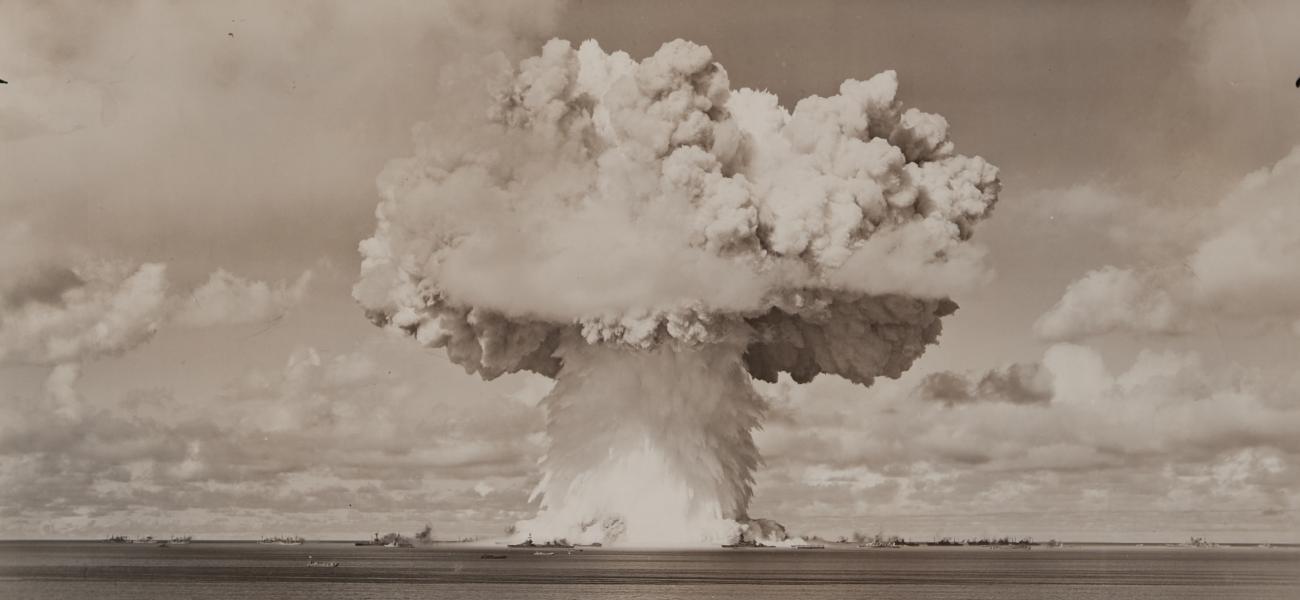
Dawn of a New Armageddon
This is a summary of an article originally published by the Bulletin of the Atomic Scientists
The author recounts her experience living through the January 2018 nuclear false alarm on Hawaii and reflects on the risks of accidental nuclear war. Today’s world has entered a new, unchecked and deadly arms race “with no rules of the road and no scheduled arms control talks” for the new weapons. A second arms race is taking place in emerging technologies, with “AI decision-support tools in nuclear decision-making” a near-term possibility. Russian President Vladimir Putin gave the world a preview of this “sci-fi arms race future” in his March 2018 showcase of Russia’s new, “invincible” weapons. The message of the speech was simple: “Russia is back.” Further danger is posed by the threat of a terrorist cyberattack on nuclear command and control—and ISIS has already begun to recruit Russian hackers, some of whom have gone missing. There are also the thousands of “old” nuclear weapons Russia and the U.S. still have ready to go, the author warns. The difficulty of missile defense further complicates matters. “Pyongyang regularly practices ‘firing salvos of missiles because the American system is designed to intercept only one or two incoming warheads at a time.’ Since 1999, the United States has spent $200 billion on missile defense and the core system has failed 8 of 18 tests.” The world was perhaps safer during the Cold War, the author writes, when there were only two nuclear powers, not nine, and it was presumed that “under conditions of mutually assured destruction,” the leaders of those two powers would act rationally. In an interview with the author, former Defense Secretary William Perry said: “Today, the danger of some sort of a nuclear catastrophe is greater than it was during the Cold War and most people are blissfully unaware of this danger. … We are, today, inexplicably … recreating the dangers of the Cold War… Because we don’t understand the dangers, we make no attempt, no serious attempt, to repair the hostility between the United States and Russia.” Nuclear expert Sig Hecker also observed to the author that “nuclear cooperation is being held hostage to the political differences between Washington and Moscow and that could indeed doom us in some fashion.” Following the nuclear false alarm in Hawaii, the author observed that most of the news stories about the incident were looking back, “blaming the guy who pushed the wrong button… But if this is the takeaway, we are still sleepwalking, thinking that we can make nuclear weapons fail-safe if we just add more redundancy.” Infallibility is impossible, she argues. While U.S. President Donald Trump has held a summit with Putin, his failure to take a strong stance on areas of disagreement with Russia undermines “the credibility of the arms control effort.” The author writes that “making the world safe from nuclear weapons is a problem from hell,” as the knowledge of how to construct nuclear weapons cannot simply be forgotten. If nuclear weapons are abolished, “a rogue state or terrorist group could create its own nukes and take the world hostage. There are no easy ways out of the nuclear mess we are in.”
Read the full article at the Bulletin of the Atomic Scientists.
Cynthia Lazaroff
Cynthia Lazaroff is a documentary filmmaker who has spent the past year interviewing officials and experts in the United States and Russia on nuclear dangers.
Photo from the Museum of Photographic Arts Collections, no known copyright.

